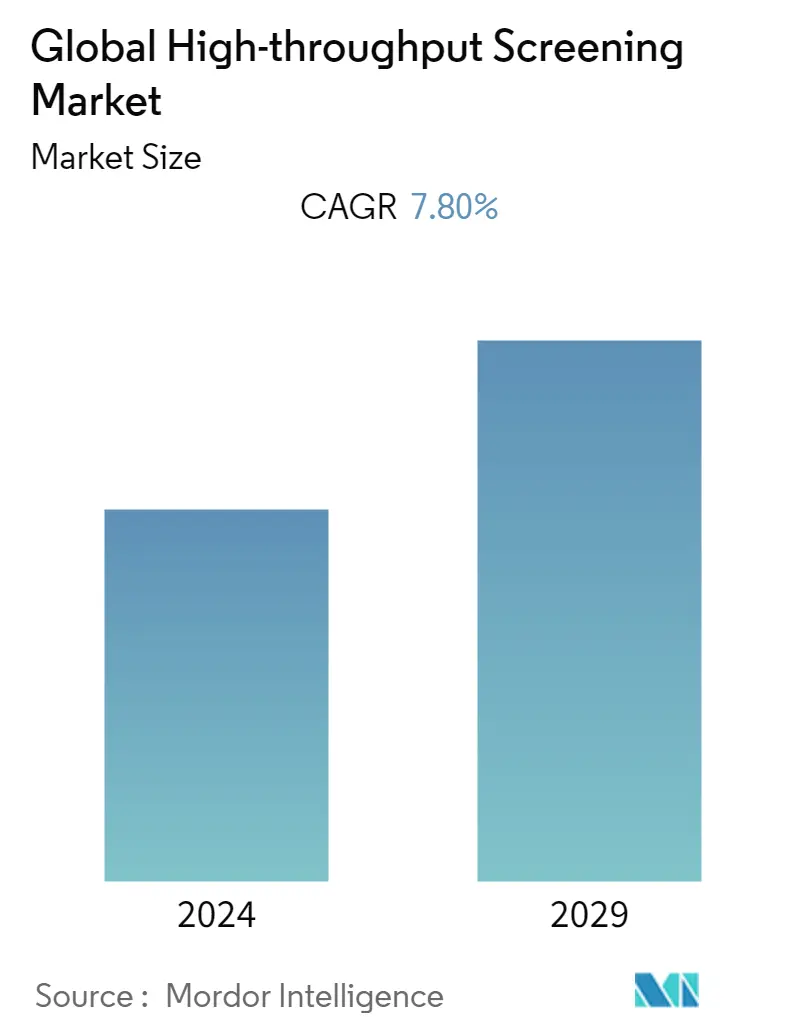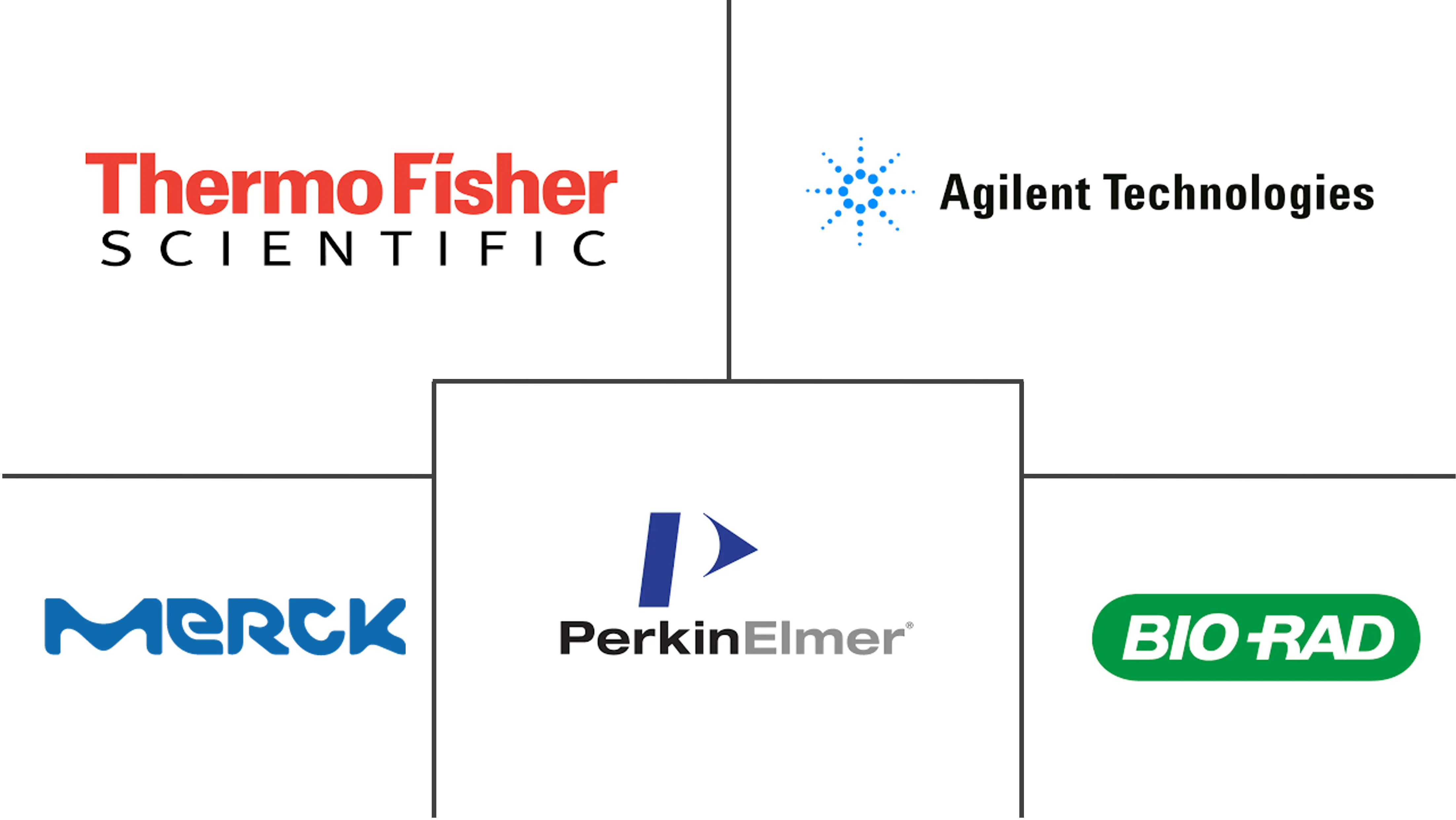Market Size of Global High-throughput Screening Industry

| Study Period | 2019 - 2029 |
| Base Year For Estimation | 2023 |
| Forecast Data Period | 2024 - 2029 |
| CAGR | 7.80 % |
| Fastest Growing Market | Asia Pacific |
| Largest Market | North America |
Major Players
*Disclaimer: Major Players sorted in no particular order |
Need a report that reflects how COVID-19 has impacted this market and its growth?
High-throughput Screening (HTS) Market Analysis
The High-throughput Screening Market is poised to grow at a CAGR of nearly 7.8% during the forecast period (2022 - 2027).
The emergence of the COVID-19 pandemic has had an adverse effect on the world economy and the healthcare system. There is a significant impact on the studied market. For instance, according to an article published in October 2021 titled 'Highthroughput screening assays for SARSCoV2 drug development: Current status and future directions, high-throughput screening has proven to be a useful approach for finding new lead compounds for the development of antiviral drugs. It has been observed that the autophagy and AP-1 signaling pathways may be promising targets for COVID-19 therapies through systematic mining of a sizable quantitative high-throughput screening (HTS) database. Thus, COVID-19 has impacted the market growth.
Certain factors that are propelling the market growth are open access to high-throughput screening laboratories, technological advancements in high-throughput screening, and increasing usage in universities and research centers.
Over the past few years, there has been a considerable growth in the number of high-throughput screening (HTS) facilities available to the public. These facilities range in size from modestly equipped university screening facilities to expansive molecular libraries and probe centers networks. These facilities provide a thorough method of probe discovery in academia and use both conventional and cutting-edge assay technology to carry out primary and secondary screening campaigns. One of the significant advantages of these centers was knowledge sharing among scientists, researchers, etc. For instance, the Columbia Genome Center offers high-quality molecular screening services for investigators throughout the Columbia University research community. Also, The European counterpart of the National Institutes of Health (NIH) program, known as EU-open-screen, provides open access to all European companies engaged in chemical biology. The association of high-throughput screening (HTS) centers is intended to provide useful information about the drug or target, or the entire process. Thus, open access provides a better platform for knowledge sharing and can help optimize the entire process, which may drive the demand for HTS technology among end users.
However, the high capital investment and need for extensive automation techniques are likely to hinder the market growth over the forecast period.
